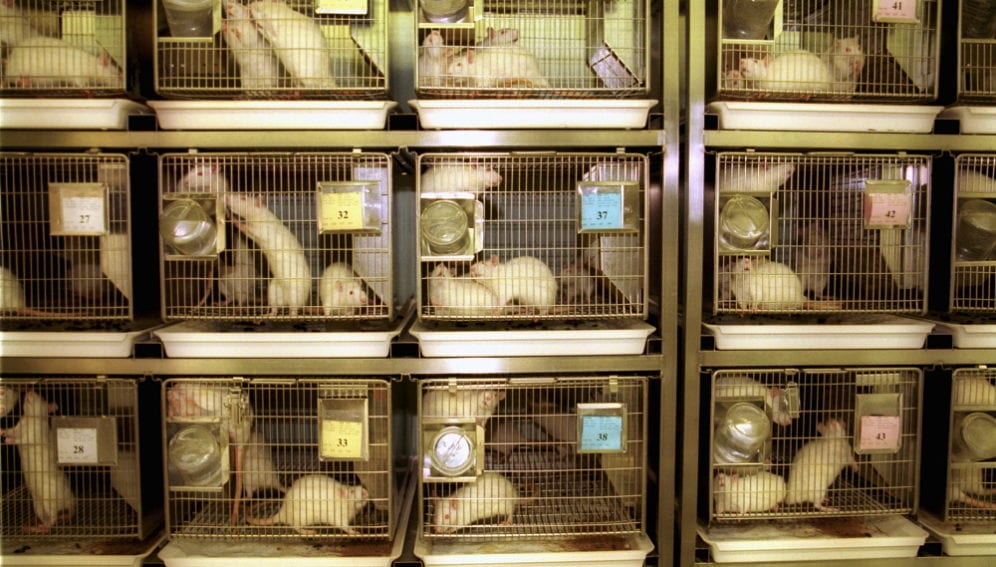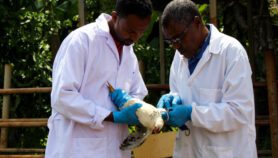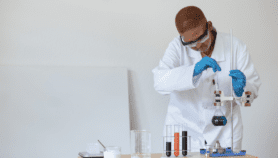By: Thomas Hartung and Mohammad A. Akbarsha
Send to a friend
The details you provide on this page will not be used to send unsolicited email, and will not be sold to a 3rd party. See privacy policy.
India could lead by combining strong animal welfare law with investment in non-animal testing, say experts.
India has made history in developing policy frameworks to safeguard wild as well as laboratory animals used in education, research and risk assessment — many countries, including developed ones, have no such safeguards.
Animal-lovers are elated. But there are doubts about how practical these frameworks are, and how seriously the government takes their enforcement.
The dissection debate
In November 2011, India’s University Grants Commission (UGC), the regulatory authority of higher education, announced ‘guidelines for discontinuation of dissection and animal experimentation in zoology/life sciences’, and sent a directive to vice-chancellors of all universities to implement these.
The guidelines require that students no longer dissect animals protected under the 1972 Wildlife Act. Undergraduate students may only watch their teachers dissect an animal, if it is not protected under Wildlife Act. Post-graduate students are allowed to dissect two individuals from unprotected species, preferably laboratory-bred.
Dissections and experiments are to be replaced by computer-based simulations and also field visits to learn about animals, including biodiversity and behaviour, in natural habitats. The slogan for this approach is ‘live zoology’.
Although medical, pharmacy and veterinary institutions are not obliged to act on the UGC guidelines, they have also been asked by the Central Ministry of Environment and Forests to implement them.
Animal rights organisations concerned about ethics — and many teachers relieved of laborious dissections — celebrated the decision. However, a substantial number of college and university teachers remain attached to dissections and are debating and resisting the ban.
And there are problems with implementation. For example, capturing freshwater frogs has been prohibited under the Wildlife (Protection) Act of India since 1980, but many universities and colleges continue to use them for dissection and experiments.
The cosmetics sector
There are signs of progress in the cosmetics sector too. Recently, the Drug Controller General of India announced that animal tests for cosmetics and their ingredients will be dropped from India’s regulatory standards, implying that animal tests will no longer be required. This is to harmonise with the European Union Council Directive 76/768/EEC, based on the 7th amendment of the cosmetics directive from 2003, which has banned the marketing of cosmetics tested on animals.
But in its decision, which was announced in 1986 and implemented in full only in 2013, the EU gave industry a long time to develop validated alternative testing methods, such as 3D models of reconstructed skin. And it has invested some 220 million Euro (US$300 million) in this, with the cosmetics industry also contributing substantial funds. [1]
But India lacks this preparation and also the capacity to develop alternatives. It has to rely on the EU-approved models, which could be expensive for the cosmetic industry and un-affordable for the scientific community.
“By overcoming current limitations it can show the way for other developing countries that are still undecided about alternatives to animal experiments, and encourage them to at least make a beginning towards ending cruelty to animals in laboratories.”
Mohammad A. Akbarsha and Thomas Hartung
As Europe and the United States make rapid progress in discovering and validating alternative testing regimes, and Europe puts strong regulations in place, India and other countries in the developing world risk being left far behind.
For example, according to Europe’s cosmetics legislation and to the US initiative Toxicity Testing for the 21st Century (Tox-21c), in the near future virtually all routine toxicity testing will be conducted without animal testing. Instead, robotic assistance will make routine test tube testing in human cells or cell lines feasible. Lower organisms and computer-based methods will also be used.
Several test tube and computer methods for toxicity testing have already been developed and validated, and several more novel approaches are in the pipeline. Europe has reinforced this trend with strengthened laboratory animal welfare legislation through the more recent Directive 2010/63/EU. This directive firmly anchors the principles of replacement, reduction and refinement (the 3Rs) so as to improve the welfare of animals that still need to be used. [2]
Mind-shift among scientists
Countries like Japan, Korea, Brazil and more recently China, have started to embrace these developments — and have created competency centers to provide expertise and programme support for scientific projects.
There is an awakening in India too. For example, on 4 September 2013 the Society for Toxicology – India (STOX – India) and Unilever jointly organised the first ever collaborative symposium between scientists and industry on novel strategies for toxicological risk assessments (in Bangalore). Until now, proposing alternatives has been the domain of animal welfare organisations, so this symposium shows a change in mindset for the scientific community.
These developments are spearheaded by People for Animals (PfA, the largest animal welfare organisation in India, chaired by Mrs. Maneka Gandhi), the Humane Society International-India and PeTA-India. There is strong academic support from the Mahatma Gandhi-Doerenkamp Center.
But more needs to be done. India’s regulatory authorities and funding agencies must prioritise research on alternatives to animal experiments. It is also necessary to build up infrastructure and train researchers to judge and implement the new methodologies.
Then a validation body will need to be created to evaluate and approve new testing methods — modelled after the European Union Reference Laboratory for Alternatives to Animal Testing (EURL ECVAM), the Japanese Center for the Validation of Alternative Methods or the Centro Brasileiro de Validação de Métodos Alternativos in Brazil.
India has the opportunity to match its animal testing policies with international developments, to improve scientific capacity and to safeguard animal welfare. By overcoming current limitations it can show the way for other developing countries that are still undecided about alternatives to animal experiments, and encourage them to at least make a beginning towards ending cruelty to animals in laboratories.
Mohammad A. Akbarsha is chair and director of the Mahatma Gandhi-Doerenkamp Center at Bharathidasan University in Tamilnadu, India. Akbarsha can be contacted at [email protected].
Thomas Hartung is director at the Center for Alternatives to Animal Testing (CAAT), Johns Hopkins University in Maryland, United States, where he is also chair and professor. Hartung can be contacted at [email protected]
References
[1] Science doi: 10.1126/science.opms.p1200062 (2012)
[2] European Commission Legislation for the protection of animals used for scientific purposes (updated 23 September 2013)














